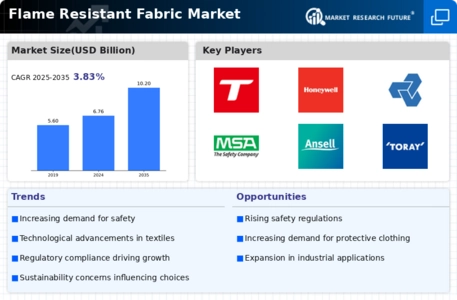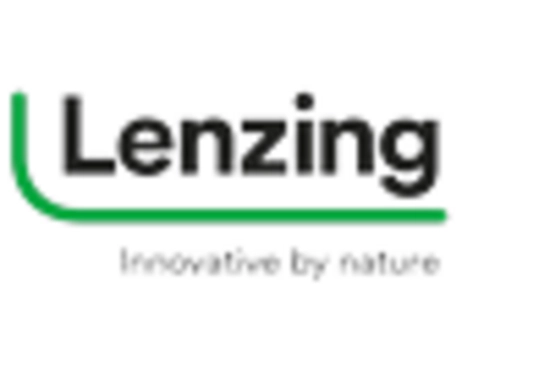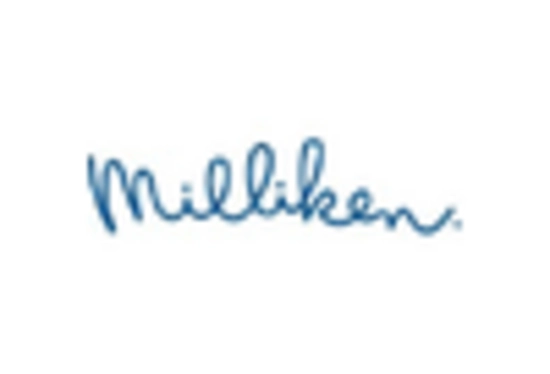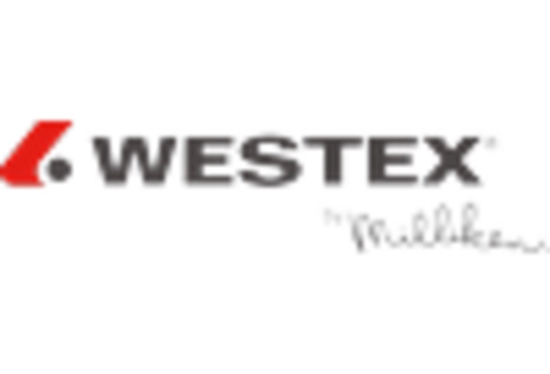Growing Awareness of Workplace Safety
There is a notable increase in awareness regarding workplace safety, which is driving the Flame Resistant Fabric Market. Organizations are increasingly recognizing the importance of providing protective clothing to their employees, particularly in high-risk environments such as construction, oil and gas, and manufacturing. In 2025, it is anticipated that companies will allocate more resources towards safety training and the procurement of flame resistant garments. This shift in focus is likely to result in a substantial increase in demand for flame resistant fabrics, as businesses strive to comply with safety regulations and protect their workforce. The heightened emphasis on safety culture within organizations is expected to further bolster the flame resistant fabric market.
Increasing Demand from Oil and Gas Sector
The oil and gas sector is a major driver for the Flame Resistant Fabric Market, as workers in this field are often exposed to hazardous conditions. The demand for flame resistant fabrics is expected to rise due to stringent safety regulations and the need for protective clothing. In 2025, the oil and gas industry is projected to account for a significant share of the flame resistant fabric market, with an estimated growth rate of around 5% annually. This growth is largely attributed to the increasing focus on worker safety and the implementation of advanced protective gear. As companies prioritize the well-being of their employees, the flame resistant fabric market is likely to see a surge in demand, particularly for high-performance materials that offer enhanced protection against fire hazards.
Technological Innovations in Fabric Production
Technological advancements in fabric production are significantly influencing the Flame Resistant Fabric Market. Innovations such as the development of new fiber blends and treatments enhance the performance of flame resistant fabrics, making them more effective in protecting against fire hazards. In 2025, the market is expected to benefit from the introduction of smart fabrics that can monitor temperature and provide real-time feedback to users. This evolution in fabric technology not only improves safety but also increases the comfort and wearability of protective clothing. As manufacturers continue to invest in research and development, the flame resistant fabric market is likely to expand, catering to a wider range of applications across various industries.
Regulatory Standards and Compliance Requirements
Regulatory standards and compliance requirements play a crucial role in shaping the Flame Resistant Fabric Market. Governments and regulatory bodies are implementing stringent safety regulations that mandate the use of flame resistant materials in various sectors. In 2025, it is projected that compliance with these regulations will drive the demand for flame resistant fabrics, particularly in industries such as oil and gas, construction, and manufacturing. Companies that fail to adhere to these standards may face significant penalties, prompting them to invest in compliant protective clothing. As a result, the flame resistant fabric market is likely to experience growth, as manufacturers develop products that meet or exceed regulatory requirements, ensuring the safety of workers in hazardous environments.
Expansion in Construction and Manufacturing Industries
The construction and manufacturing industries are experiencing robust growth, which is positively impacting the Flame Resistant Fabric Market. As these sectors expand, the need for protective clothing that meets safety standards becomes increasingly critical. In 2025, the construction industry is expected to witness a growth rate of approximately 6%, driving the demand for flame resistant fabrics. This trend is further supported by the rising number of construction projects and the implementation of safety regulations that mandate the use of flame resistant materials. Consequently, manufacturers are likely to invest in innovative fabric technologies to meet the evolving needs of these industries, thereby propelling the flame resistant fabric market forward.


















Leave a Comment